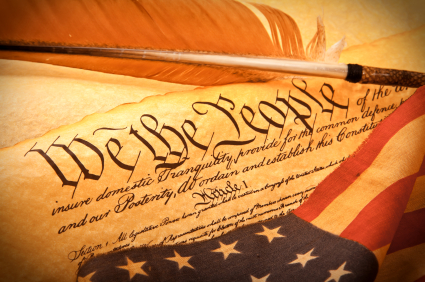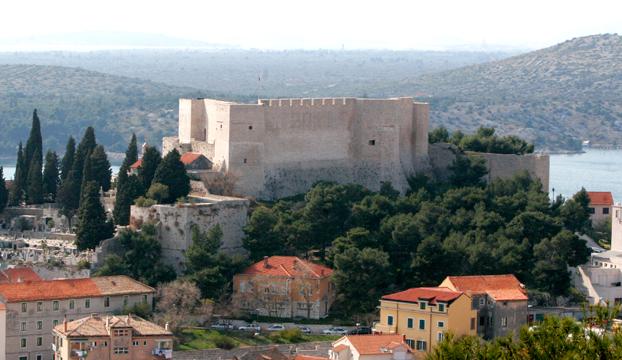As you already
know, travel is one of the most popular forms of leisure around the world. Once
you experience the joy of travelling, there is no coming back. You always want
to see more. At the age of 17, I had the opportunity to visit several
destinations with my classmates. Since we had been given the right to choose
the places we wanted to visit, we spended our days thinking only about that.
Some of the listed destinations were France, Spain, Dublin and London. But in
the end, our teachers made the decision for us.
1) HUNGARY,
BUDAPEST
Buda Castle Hill
.jpg/1280px-Budapest,_Castle_Hill,_Royal_Palace_(6784985256).jpg)
The first citizens arrived to Castle Hill in the 13th century after the Mongolian invasion, seeking protection in the hills of Buda. The first royal castle was built around this time. The golden age of Castle Hill was in the 15th century, following the marriage of King Matthias Corvinus and Beatrix of Naples in 1476. Many Italian artists and craftsmen accompanied the new queen, and Buda became an important European city. After the Turkish occupation, Buda was in ruins. A Baroque city was built, and Castle Hill soon became the district of government. During World War II, Buda was bombed to the ground and had to be rebuilt again.
Today, Castle Hill is recognized as a World Heritage Site, and has many must-see attractions, Gothic arches, eighteenth-century Baroque houses and cobblestone streets. Though Castle Hill has changed much since building began in the 13th century, its main streets still follow their medieval paths. Some houses date back to the 14th and 15th centuries, giving us an idea of what the Castle District may have looked like back then. Practically every house has a plaque indicating the century in which it was built, and providing details of its history. A surprising number of the buildings are still private homes, as Castle Hill is also a residential area. Cars have been banned - only people who live and work here are allowed to drive; however, public transportation is available.
Your best option is to walk along the cobblestone streets and discover Castle Hill at your own pace. Take your time, as there is a lot to see and do, and exploring Castle Hill can take an entire day.
Chain Bridge
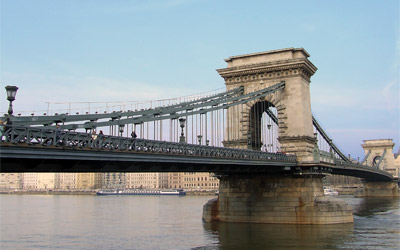
Spanning the Danube between Clark Ádám tér (Buda side) and Széchenyi István tér (Pest side), the Chain Bridge (Lánchid) was the first to permanently connect Buda and Pest. There has been a pontoon bridge on the river since the Middle Ages enabling passage from spring to autumn. During winter, the river froze making crossing possible; however, there were times when the weather changed abruptly and people got stuck on one side. In 1820, this happened to Count István Széchenyi, when he had to wait a week to get to his father's funeral. This experience led him to decide that a permanent bridge had to be built. He became a major advocate of the project and founded a society to finance and build the bridge.
At the time of its construction, Chain Bridge was considered to be one of the wonders of the world. Chief engineer Adam Clark, a master builder from Scotland, completed the span in 1849. Legend has it that he was so proud of his masterpiece he would challenge anyone to find any fault with his work. When it was discovered that the lions at either ends of the bridge didn't have tongues, he was so ashamed that he committed suicide. This of course is only an anecdote. The tunnel, which was built a few years later, is also the work of Adam Clark. By the way, the lions do have tongues; however, they are not visible from the street below. During World War II, the bridge was damaged and its rebuilding was completed in 1949.
It is an interesting detail that the bridge's designer was an English engineer named William Clark, who had no relation to the Scottish engineer, Adam Clark, the builder of the bridge. The Chain Bridge is a suspension bridge, and it's a large scale version of William Clark's earlier Marlow Bridge on the River Thames in Marlow, England.
Matthias Church
The historic Matthias Church (Mátyás-templom) is over 700 years old. The church was the scene of several coronations, including that of Charles IV in 1916, the last Habsburg king. It was also the venue for the great Hungarian King Matthias two weddings, hence its name.
The history of the church serves as a symbol of the city’s rich past. The eastern gate of the church was built in the 13th century, when Buda was founded following the Mongolian invasion. The central part of the church was built around 1400, and from as early as the 14th century, monarchs were crowned here as kings. In the 15th century, King Matthias’ royal wedding was also held here. During the Turkish conquest, soon after Buda was captured, the church became the city’s main mosque. The walls were whitewashed and covered with carpets. After the Turkish occupation, Buda lay in ruins. In the 17th century, an attempt was made to restore the church in Baroque style.
Following the Austro-Hungarian Compromise in 1867, Matthias Church was the scene of a big coronation ceremony when Franz Joseph and his wife Elizabeth were crowned, and thus the Austro-Hungarian Empire was established. Towards the end of the 19th century, a major reconstruction took place, and the building was restored using many original parts and regained much of its former splendor. The roof is covered with the famous Zsolnay ceramic tiles, making the building even more beautiful. Today, Matthias Church remains one of the city’s most prominent buildings. During his stay in Hungary in 1991, Pope John Paul II visited the church.
Matthias Church is one of the oldest buildings in Buda. It’s not only a church, but a museum as well. It’s frescoes are the works of famous Hungarian painters. Every year, the church hosts several concerts featuring Hungarian and foreign musicians. One of the most popular concert series is called the “Sunday Organ Nights at the Matthias Church”. Since it’s located on Castle Hill, there are many other sights nearby that are worth visiting. Castle Hill is also great for walks and admiring the beautiful buildings while following the cobblestone streets, which maintain their medieval courses.
Heroes' Square
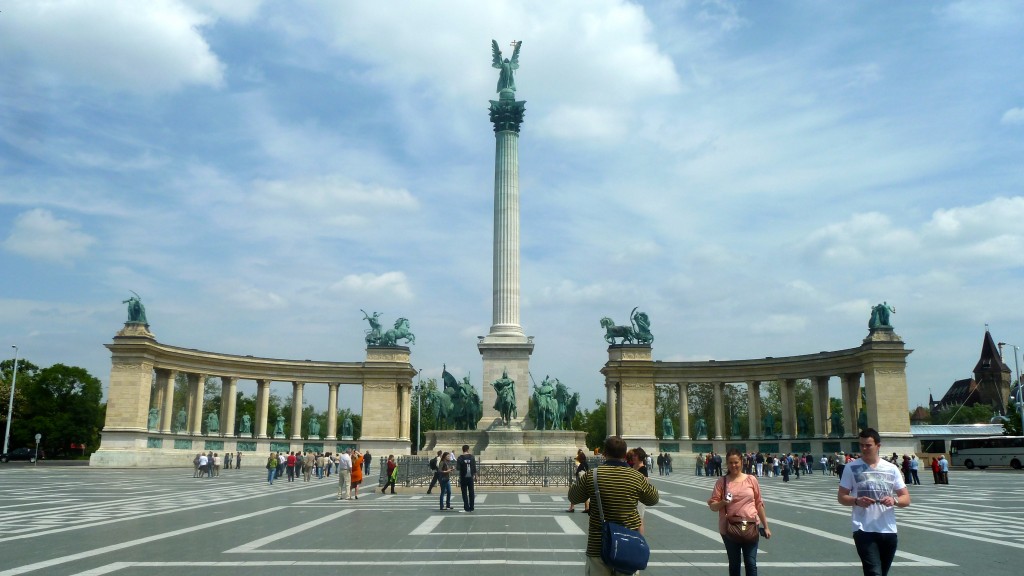
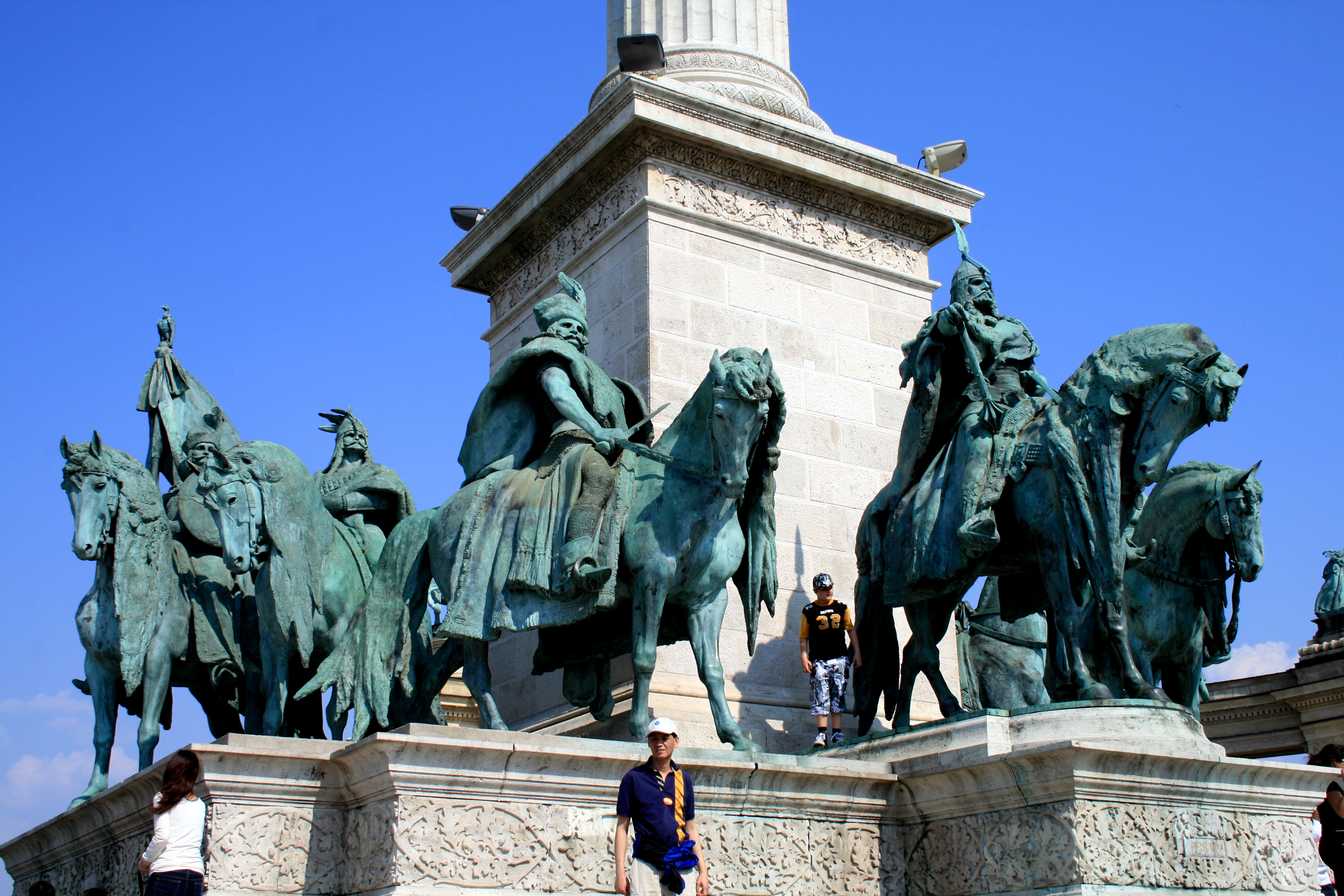
Laid out in 1896 to mark the thousandth anniversary of Hungary, Heroes' Square (Hősök tere) is the largest and most impressive square of the city. Located at the end of Andrássy Avenue and next to City Park, Heroes’ Square is one of the most visited sights in Budapest.
In the centre is the Millenium Memorial statue, built in 1896. The Angel Gabriel sits atop the cenotaph holding the Hungarian crown and cross and at the base is the seven Magyar tribe chiefs that led the Hungarian people into the Carpathian basin in the 9th century.14 statues sit around the semi-circle arcade base, set further back in the square from the central cenotaph. Within each archway are famous Hungarian rulers and statesmen. The four figures on top of the arcade represent work and prosperity, war, peace and knowledge and glory.
2) CZECH REPUBLIC, PRAGUE
Dancing house

This stunning building, constructed between 1992-1996, is somewhat of a rarity in the city centre: a modern glass building surrounded by historic architecture.Dancing House has daring, curvy outlines, which led its architects Vlado Milunc and the American Frank O'Gehry to initially name it the "Fred and Ginger Building", after the legendary dance duo.The top floor of Dancing House is the only part open to the public, and is home to one of the city's leading restaurants. For the reason already given, it is called the Ginger & Fred Restaurant.
Vltava River
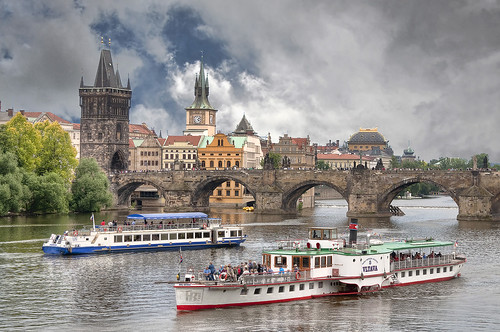
The Vltava River flows through the centre of Prague, and is the waterway around which the city has developed over the past 1000 years.
The Old Town (Staré Město) and the New Town (Nové Město) are on one side of the Vltava River. On the other bank lies theLesser Town (Malá Strana) and the magnificent Prague Castle, which is an awesome sight from the water.At the centre of the city is Charles Bridge, under which the Vltava River flows, and with great force at certain times of the year.From Charles Bridge, the panoramic view over the river and of the historic buildings running along its banks make it a focal point for visitors. Walk over the bridge, then take a river cruise under it, to enjoy two unique perspectives of the city.Another pleasant way to take in the beauty of this part of Prague is to dine at one of the riverside restaurants. These have terraces and viewing areas which look out over the water.
Outside Prague, the Vltava River meanders through pretty countryside, passing the occasional castle and historic building. At 430km in length, the Vltava River is the longest river in Czech Republic.
Old Town Bridge Tower


The Old Town Bridge Tower is a beautiful Gothic tower guarding one end of Charles Bridge, and heralding entrance to the Old Town.


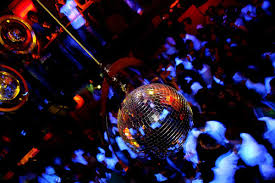






This blackened, aged gate was completed in 1380 and forms part of the old fortification system of Prague, built to protect the Old Town against northern invaders.Although partially damaged by the failed attempt of marauding Swedes to occupy the Old Town in 1648, sculptures by Peter Parler (whose genius can also be seen in St. Vitus Cathedral) survive.Climb the 138 stairs inside the tower to reach the tower gallery, for a bird's-eye view over Charles Bridge, the Vltava River, the Old Town, the Lesser Town (Malá Strana) and Prague Castle.
Karlovy Lazne

Karlovy lázne (Czech pronunciation: [ˈkarlovɪ ˈlaːzɲɛ]; meaning "Charles' Spa") is a five story disco club in Prague, Czech Republic and the largest club in Central Europe.
It was used as the prototype for the "Crazy Disco" scene of the movie Bronson.
Lázně is situated 50 meters from the eastern end of the Charles Bridge on the bank of the Vltava River. An entrance fee of 180 korunaallows access to the club, which features different music on each of its five levels.
The basement level contains free internet access for guests, foos ball tables, a full bar and dance floor, with hip hop and R&B being the music theme. Various nooks and crannies are present on this floor.The street level floor, and the main entrance into Lázně features another bar, tables and chairs, and a balcony looking onto the basement dance floor. One floor up is the Kaleidoskop Room, where mostly teenagers bounce around to electronic dance music. The next level features a mixture of top 20 singles, mainstream dance hits, and retro that pushes the envelope all the way back to the 1950s, but especially music from the 80's and 90's. What Is Love is the most played song at this level.The next level plays mainly trance and techno. The top level is the Chill Out Room, also featuring trance and techno music where people dance in laser cages. However, the level lacks a serious dance floor and visitors instead relax on comfortable couches and bean bag chairs. Every level of Lazne features two bars.
Seeing as Lázně is the largest club in Prague,and supposedly Central Europe as well,the club is crowded at weekends with an assortment of tourists and locals, guaranteeing an interesting experience.
3) AUSTRIA, VIENNA
Schönbrunn palace
Schönbrunn Palace is a World Cultural Heritage site and Austria's most-visited sight. The baroque total work of art consisting of palace and gardens was for centuries the property of the Habsburgs and is today largely in its original condition. Visitors will find numerous attractions here, from a tour through the authentically furnished residential and ceremonial rooms of the Imperial Family in the palace, to the maze and the labyrinth in the gardens and a separate Children's Museum.
Vienna Opera House

the Vienna State Opera is considered one of the most important opera houses in the world; in particular, it is the house with the largest repertoire. It has been under the direction of Dominique Meyer since September 1, 2010. This famous stage offers a different program every day, with over 50 operas and ballet works on around 300 days per season.
Prater
The Prater is a large public park in Vienna's 2nd district called Leopoldstadt.



Me and my friend trying to stay alive :P
Aaan yeah, that was pretty much it. This trip was such an amazing experience and probably my favorite high school memory.
Good night :)

